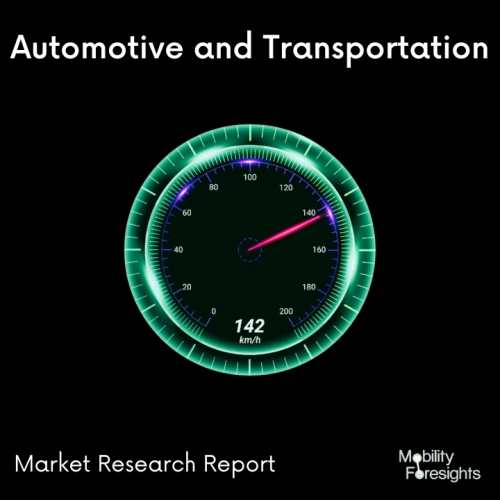
- Get in Touch with Us

Last Updated: Apr 25, 2025 | Study Period: 2024-2030
Automotive Electric Power Steering (EPS) revolutionizes the traditional steering system by replacing hydraulic mechanisms with electronic components, enhancing vehicle control and efficiency. EPS offers a smoother, more responsive driving experience, making it a popular choice in modern vehicles.
EPS operates through a combination of sensors, control units, and an electric motor, all working together to provide the necessary steering assistance. These components detect the driver's input and vehicle speed, adjusting the level of assistance accordingly.
Unlike conventional hydraulic power steering, which requires a constant flow of hydraulic fluid, EPS only consumes power when assistance is needed, contributing to fuel economy and reduced emissions.
One of the primary advantages of EPS is its versatility. By fine-tuning the steering assistance levels, EPS can adapt to various driving conditions. At low speeds, it delivers maximum assistance, making parking and maneuvering effortless. As the vehicle gains speed, the assistance decreases, providing the driver with more direct feedback and enhancing stability on the road.
The elimination of hydraulic systems also reduces the maintenance requirements, as there is no need to monitor fluid levels or address potential leaks. EPS systems are generally more durable and reliable, leading to longer lifespans and overall cost savings for vehicle owners.Moreover, EPS enables the implementation of advanced driver-assistance systems (ADAS).
By integrating with other vehicle systems, EPS contributes to features like lane-keeping assistance, collision avoidance, and self-parking capabilities, enhancing both safety and convenience on the road.
AUTOMOTIVE ELECTRIC POWER STEERING MARKET SIZE AND FORECAST

The Global automotive electric power steering market accounted for $XX Billion in 2022 and is anticipated to reach $XX Billion by 2030, registering a CAGR of XX% from 2024 to 2030.
Bosch's E-Power Steering system is an innovative solution for enhancing the steering capabilities of vehicles. It utilizes an electric motor to provide power assistance to the steering system, improving the overall driving experience.
The system offers various benefits such as improved fuel efficiency, reduced emissions, and enhanced steering control. By eliminating the need for a traditional hydraulic power steering system, it also eliminates potential leaks and reduces maintenance costs.
Bosch's E-Power Steering system features advanced sensors, controllers, and actuators that work together to ensure optimal performance and responsiveness. It is designed to be adaptable to different vehicle types and can be customized according to specific requirements.
"Electric Drive Assist" by ZF Friedrichshafen AG is an innovative automotive technology designed to enhance vehicle efficiency and performance. This system integrates an electric motor and intelligent control algorithms with the existing combustion engine, enabling seamless electric assistance during acceleration and cruising.
By optimizing power distribution and regenerative braking, it improves fuel efficiency, reduces emissions, and enhances overall driving experience. The system also allows for smooth transition between electric and internal combustion modes, promoting eco-friendliness without compromising on performance. ZF Friedrichshafen AG's Electric Drive Assist showcases their commitment to sustainable mobility solutions for the automotive industry.
| Sl no | Topic |
| 1 | Market Segmentation |
| 2 | Scope of the report |
| 3 | Abbreviations |
| 4 | Research Methodology |
| 5 | Executive Summary |
| 6 | Introduction |
| 7 | Insights from Industry stakeholders |
| 8 | Cost breakdown of Product by sub-components and average profit margin |
| 9 | Disruptive innovation in the Industry |
| 10 | Technology trends in the Industry |
| 11 | Consumer trends in the industry |
| 12 | Recent Production Milestones |
| 13 | Component Manufacturing in US, EU and China |
| 14 | COVID-19 impact on overall market |
| 15 | COVID-19 impact on Production of components |
| 16 | COVID-19 impact on Point of sale |
| 17 | Market Segmentation, Dynamics and Forecast by Geography, 2024-2030 |
| 18 | Market Segmentation, Dynamics and Forecast by Product Type, 2024-2030 |
| 19 | Market Segmentation, Dynamics and Forecast by Application, 2024-2030 |
| 20 | Market Segmentation, Dynamics and Forecast by End use, 2024-2030 |
| 21 | Product installation rate by OEM, 2023 |
| 22 | Incline/Decline in Average B-2-B selling price in past 5 years |
| 23 | Competition from substitute products |
| 24 | Gross margin and average profitability of suppliers |
| 25 | New product development in past 12 months |
| 26 | M&A in past 12 months |
| 27 | Growth strategy of leading players |
| 28 | Market share of vendors, 2023 |
| 29 | Company Profiles |
| 30 | Unmet needs and opportunity for new suppliers |
| 31 | Conclusion |
| 32 | Appendix |